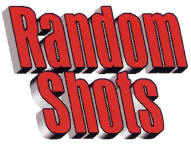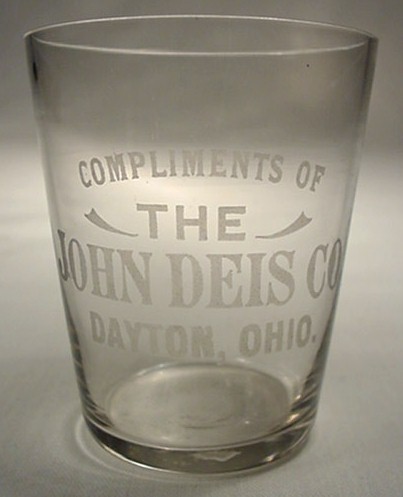
by Robin R Preston

Fig. 1

Fig. 2
Bottles and Extras, Vol. 17, Issue 3 (Summer 2006), pp. 47-51
|
by Robin R Preston |
 Fig. 1 |
 Fig. 2 |
Shooting Shots: Part III
This is the final installment in a three-part "Shooting Shots" series that discusses some
of the issues one faces when attempting to document a shot collection
photographically. In this issue, I'll provide some specific
ideas about how to bring out the best in your shots, however photogenic (or not)
they might be.
I should preface this edition with two disclaimers. First, while I developed
some sense of how various lighting conditions affect the final image during my
nature photography days, I make no claim of expertise. Don't be afraid to
experiment on your own because it's more than likely that you'll produce
images that are better and more compelling than any you see here. Second, I'm a cheapskate. I'd far rather spend
money on glass than photographic gizmos, so if I can get by with a
camera and tripod and a clean background (even if only the sky:
see below), then
so much the better. I'm assuming that you feel similarly, but if you have
the funds, you could probably put together a small photographic studio for just a few hundred
dollars and that would add to the convenience and reproducibility of your
documentation sessions.
Our review of good, bad and ugly images in the last installment taught us that
creating a pleasing photo of a glass requires that we mount the camera on a
tripod, provide a uniform and contrasting background, and be aware of potential
reflections. So what next?
Before beginning any photo shoot, you should make it a habit to wash your
glasses. Even if kept in a china cabinet, glasses are magnets for airborne dust
and grease, so fill a plastic tub with lukewarm water, add a dash of liquid dish
detergent, and wash very gently using a new sponge or soft cloth. Under NO
circumstances should you use scourer or abrasive pad. If you're considering
putting them in the dishwasher, call 1-800-911-SHOTS to receive a professional
intervention. Rinse and allow them to drain, then pat dry with a lint-free cloth
(rubbing weakens the label, even if ever-so-slightly). All this takes time, but
if you want a photo you can be proud of, then the glass has to be dust-free and
glittering.
I’ll cover three different photographic scenarios, 1) shooting indoors with
natural light, 2) shooting outdoors with natural light, and 3) shooting indoors
with artificial light.
Before launching into full documentation mode, I would strongly suggest a period
of experimentation using a duplicate Sunny Brook, Rieger's O! So Good,
Kellerstrass, or other expendable glass you have at hand, with the exception of a Hayner.
That's because cylinders bounce reflections at more acute angles
than the more common shots: you need to practice with a regular glass before
tackling other forms.
1) Shooting Indoors, Natural Light
I work indoors almost exclusively because the light is directional and
easier to control. It also avoids the need to take along a snow shovel and a hot
Thermos during winter months. The indoors/natural light technique is the most difficult to pull off
successfully and can be endlessly frustrating, but it does produce exceptionally
flattering images with inky, liquid contrast and sun-kissed rims.
There are several issues we need to address: suitable backgrounds, the quality
of the light source, and how to minimize reflection and achieve maximal contrast
between label and backdrop.
Background: Because most pre-pro shots have a white frosted label, they
can be shown off to their fullest advantage against a dark background. Black is
as dark as it gets, although it sets a somber tone that, while ideal for
photo-documentation, can become positively funereal if used to excess. Since
writing a short instructional piece for www.pre-pro.com advocating the use of
black, eBay has been inundated with white-on-mourning shots and the gloom is
almost palpable! Ideal backgrounds include black, navy blue, claret
red, and forest green. I periodically visit local craft stores such
as Jo-Ann Fabrics or Michael's and head to their fabric and felt section in search of new
backdrops. Buy a piece at least 3 foot square to allow plenty of room for
maneuver.
You could also use picture-framer's mat board (more expensive but the fine texture of the
surface is difficult to beat) or poster board (patchy and usually has a
distracting sheen), and then visit The Home Depot or Lowe’s and buy a couple of
spring clamps to lock the sheet on a convenient table top [Figure 3].
The ideal photographic background is seamless: the fabric or board transitions
from horizontal to vertical in a smooth three-foot arc that contains no
distracting folds or creases. Use a pile of heavy books to provide support
for the seamless at the rear.